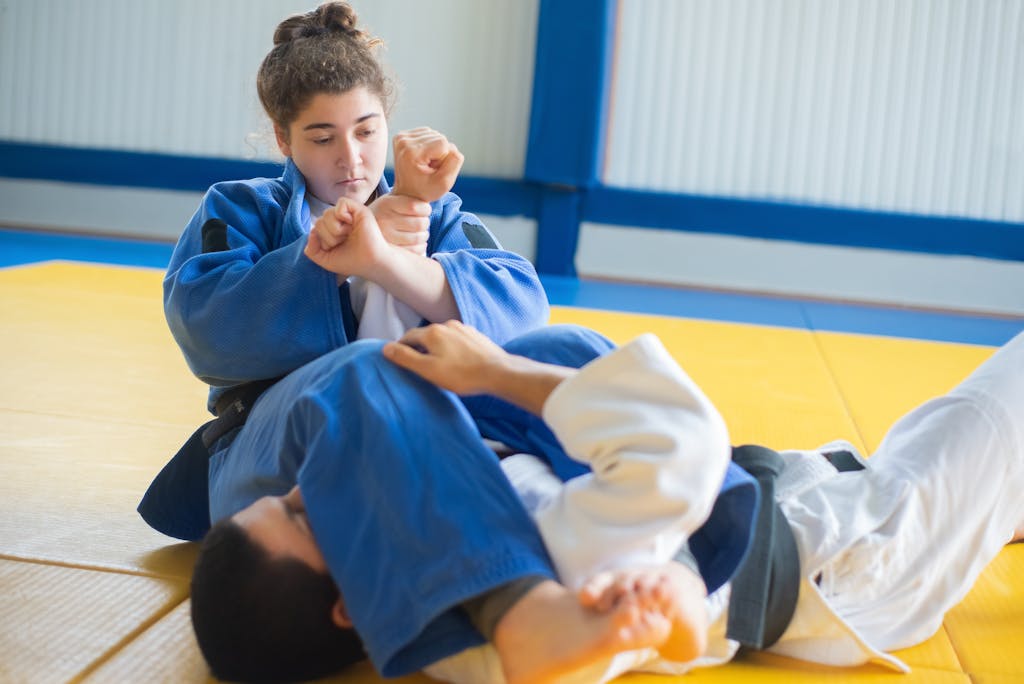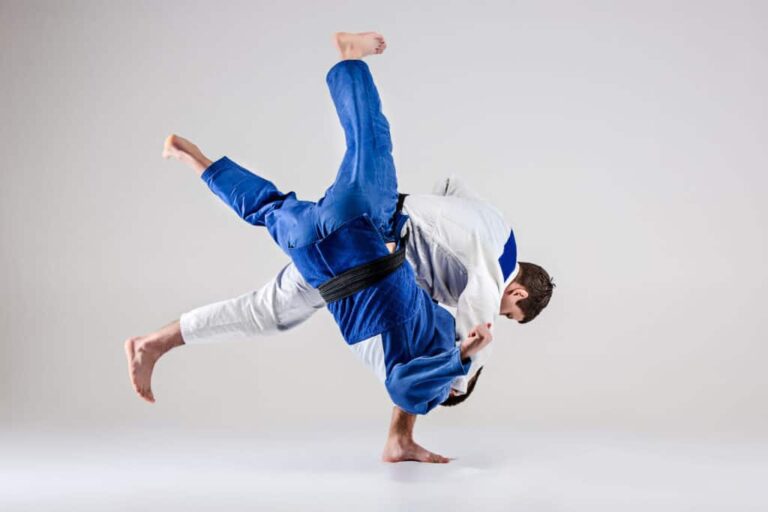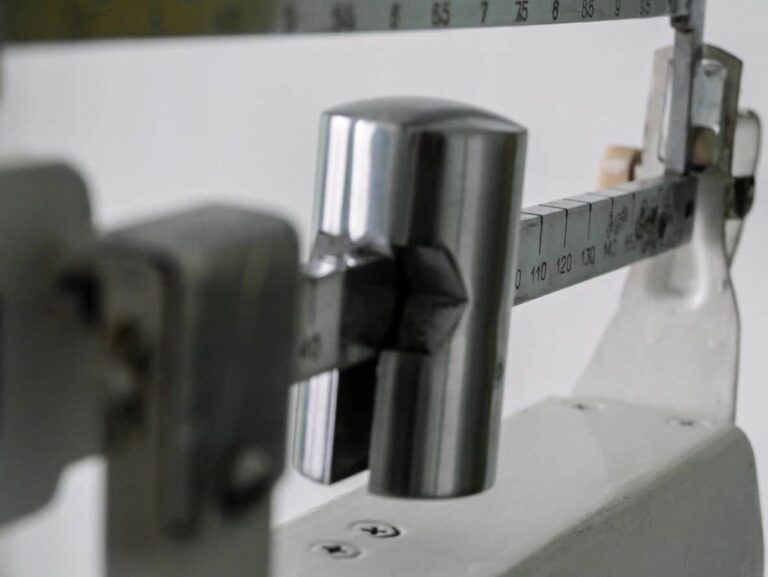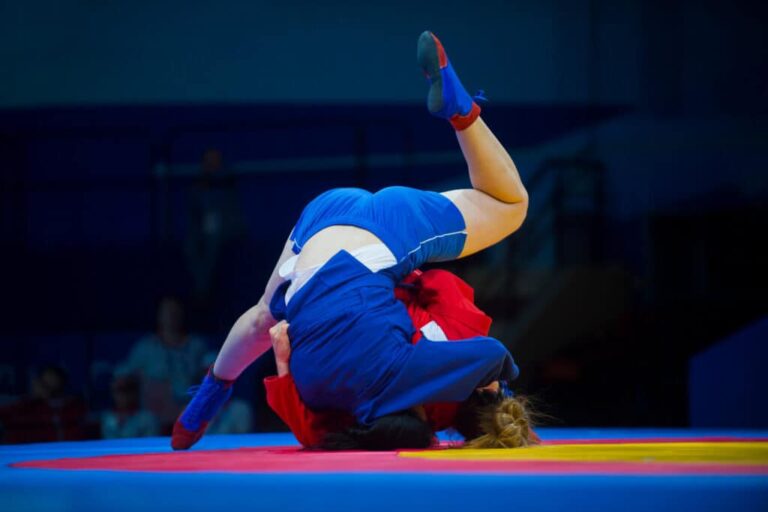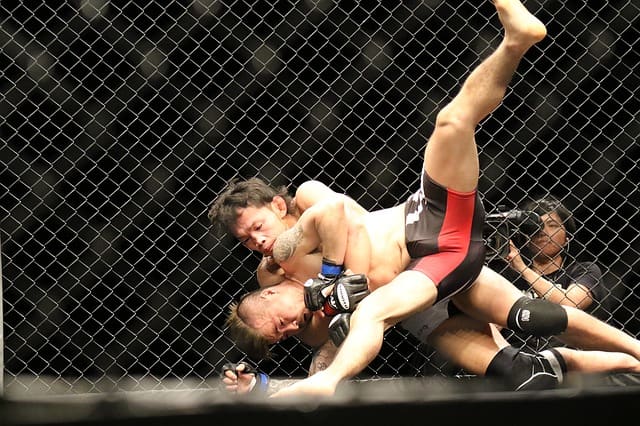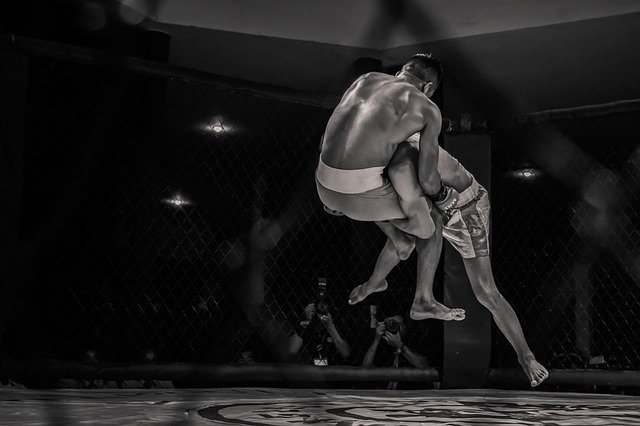Frequently Asked Questions About Judo
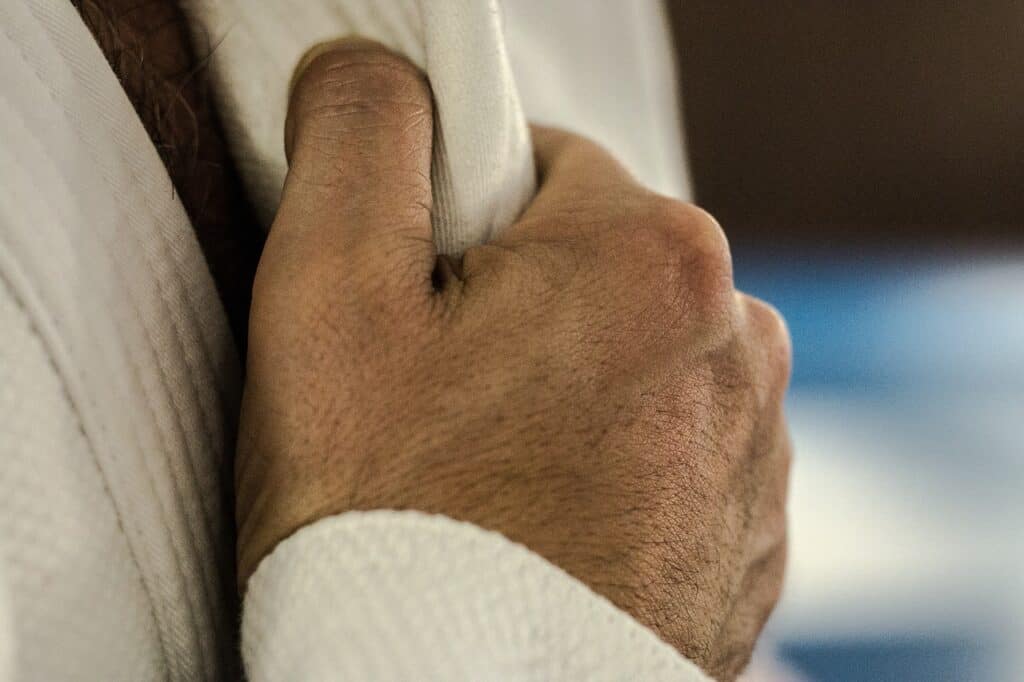
If you are new to judo or curious about getting started you probably have a ton of questions. Though I’m sure we won’t answer every question you have on judo here is our list of frequently asked questions.
Who Founded Judo?
Judo was created in 1882 by a man named Kano Jigoro, who started out practicing Ju-jutsu. The early beginnings of Judo were heavily influenced by the teachings and beliefs that Ju-jutsu held.
Kano felt the need to build a more technical system that resonated with more modern people and their needs. While studying deeply into more classical Ju-jutsu, he became inspired to create a system that not only reached others through martial arts but also through the mind and spirit.
What Is The Judo Belief System
While early teachings of Ju-jutsu speak of maintaining strength and flexibility, Judo was etched into existence by abiding by the belief that you needed physical and mental strength to succeed. Not only did Kano believe that this form of teaching would make students stronger and more disciplined, but he also felt it would contribute to human and social development.
While Jujutsu set out to strengthen the body, Judo sets out to perfect the mind and body while also using your energy correctly. While crafting this new form of martial arts, Kano dropped the ‘Jutsu,’ which means technique, from the word Ju-jutsu, and added the suffix ‘do,’ meaning path.
Thus, Judo was born, and Kano began spreading the word about his new-found teachings that would forever change the world. Kano has since been praised as “the father of Japanese physical education” and spent his life educating and teaching Judo to people worldwide.
Judo became an official Olympic sport in 1964, and it continues to be practiced and taught in over 200 countries today. To truly appreciate this vast and ever-growing sport, it’s important to understand its history, as well as the belief system it holds.
What Do You Call A Judo Instructor?
There are tons of different martial arts from across the world. Even if you do not personally practice martial arts you have probably seen the movies where there is a martial arts teacher and their students.
It can be confusing what the proper name of the instructor should be depending on the martial art style. Sometimes it’s master and sometimes it’s Sensei or professor. But what do you call a judo instructor?
The proper name of a teacher or instructor in judo is Sensei. Translated into English the word Sensei simply means before life. Or more simply put the one who has gone before you. The basic concept is that they started the path before you and will be a guide for you along your journey.
Generally speaking, your Sensei has likely dealt with or has already experienced the problems you will face in judo. Because of this, they can help you through the struggles that they have already overcome. That said, the word Sensei has been used in more areas than just martial arts. In Japan, the word Sensei might be used for someone who is a spiritual leader or guide.
Why Do You Refer To A Judo Instructor As Sensei
A judo Sensei is a person who has set out on a journey similar to the one you are on but is several steps ahead of you in their journey. Because of this, they will be able to see the problems and obstacles you will likely run into as well. The hardest journey is often the one traveled for the first time.
Think about the first people who set to explore throughout the western United States during the Lewis and Clark Expedition. They set out before anyone else without knowing what obstacles they would face. They had no map and had to learn the path themselves.
The next group who would set out on this journey would have an easier time because someone had already gone out before them. In many ways, you could say that Lewis and Clark were the Sensei of the next group of people who went after them.
How Much Do Judo Classes Cost?

Judo can be a fun and beneficial way to learn self-defense and get some exercise. In addition, judo is also a competitive sport that is recognized across the globe. One thing that might hold you back from joining, however, is the worry of how much judo might cost. You might be wondering how much judo classes cost as well as the cost of the gear you might need as well.
Most privately owned judo dojos charge around 100-200 dollars per month in the United States. The price often depends on where you are in the country and the number of classes taught per week.
You might be able to find cheaper classes at a rec center or somewhere else. That said, judo classes taught at rec centers for cheaper prices are usually not as high quality. Though this is not always true, you are probably better off going to a school with a good reputation.
I do understand that throwing down 100-200 dollars a month might not be in your budget. If you are simply wanting to get some exercise and practice judo once or twice per week then you might find a place to learn that is cheaper. Judo at rec centers are sometimes taught by great teachers but often only of few times per week at most.
What Do You Call a Judo Uniform?
You just started Judo, or you want to start, then you’ll need to get the right uniform for the practice, even if you’ve done other martial arts before. Before you get too into Judo, you should also know the names for various things, like the uniform you wear. So then what do you call a judo uniform anyway?
You call a Judo uniform a Judogi. The Judogi includes canvas pants, a heavy jacket, and a belt. Judo typically requires a blue Judogi and a white Judogi so that competitors aren’t all wearing the same thing. The belt comes in different colors based on the person’s level in Judo.
If you want to practice Judo, you should know some of the key terms for the sport. That way, you can walk into a match or practice session and not feel confused.
How Much Does A Judogi Cost?
Another cost you will need to consider is the cost of a judogi. Though some judogis might cost a fair bit of money it is a fee that you will only need to worry about once you have worn a gi out. A good gi should last you a few years at the very least. But how much does a judo gi cost?
A good judo gi will cost you around $100. Most judogis will go for anywhere between $50 to $300. You do need to consider quality however as a low-quality judogi will wear very fast.
Though you can get started with just one gi, it is probably a good idea to have a few high-quality gis. This way you are always coming into class with a clean gi. This is important, as bad hygiene in gyms can spread skin infections like ringworm and staff. So protect yourself and your team by wearing a clean gi to every class.
Thankfully a good judogi will last you for quite some time. Just make sure to take good care of your gi and it should last a long time. Make sure that you properly wash your judogi and avoid using high heat when washing. For a full guide check out my article: How to wash a judogi?
How Much Does a Judogi Weigh?
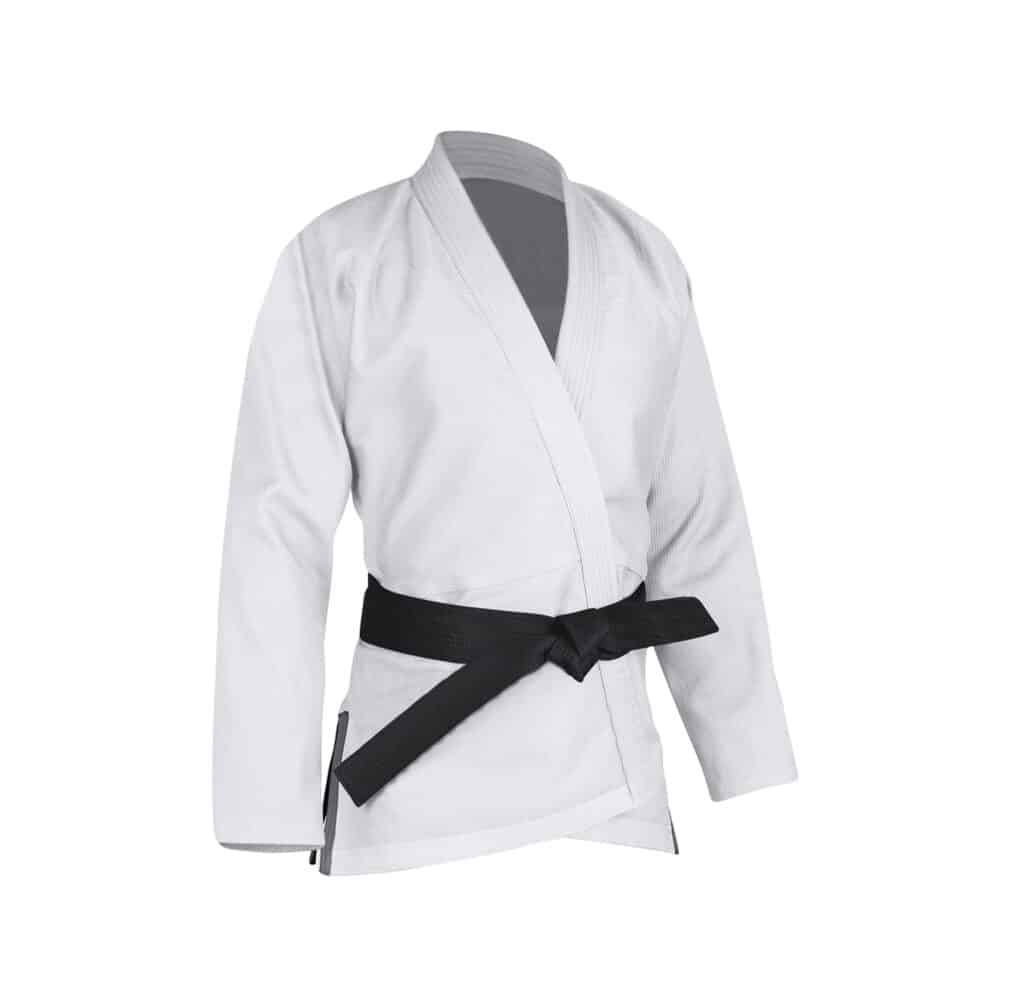
A Judo Gi is an extremely durable and heavy-duty outfit designed to be held and pulled on aggressively, during competition, without tearing. Heavier gis are sturdier but can weigh you down and give your opponent better grips. So places will also have you weigh in with your GI so it is important to know how much your gi weighs.
A Judo Gi weighs between 300 and 550 g/m2 (10.58 and 19.4 oz/m2) if it’s single weave and 650 to 1000 g/m2 (22.93 to 35.27 oz/m2) if it’s double weave. A single weave Judo Gi is lighter and more breathable, but it lacks the strength and durability of a double weave Judo Gi. Of course, a judogi can weigh more or less than this.
Do Judo Throws Hurt?
Judo combines many different fighting techniques (rolls, chokes, etc.), but it focuses mainly on throws: throwing (nage-waza) and groundwork (ne-waza). Judo students will spend many hours training both the standing (tachi-waza) and sacrifice techniques (sutemi-waza) to master the martial art. That raises the question: Do judo throws hurt?
Judo throws can hurt, but they don’t have to during training. Typically, Judo students will train on tatami mats designed to absorb impact from Judo throws and falls. Beginners usually train Judo throws only under their coaches’ strict supervision to prevent or minimize injuries. Learning how to fall is the best thing you can do to avoid getting hurt with a judo throw.
Judo throws can hurt, but you can lessen the pain from falls if you’re careful. When you first pick up Judo, your Sensei will demonstrate essential Judo basics to you and practice them with you step-by-step.
It should always be every instructor’s top priority to help students improve their break falls to avoid falling on their clavicle (collarbone) or on their palms, which can lead to severe injuries. Learning how to break fall can minimize the likelihood of getting hurt when getting thrown in judo.
Does Judo Stunt Your Growth?

Because of its ever-growing popularity, people are getting involved in Judo at increasingly younger ages. One common misconception about judo is that it can stunt your growth. But is this true? Should parents be worried about judo stunting their child’s growth?
Judo does not stunt your growth. There is nothing inherent to the sport of Judo or its training methods that directly stunt growth. However, Judokas who cut weight for competition risk stunting their growth because the body needs calories and nutrients to grow.
During the puberty stage of human development, the body grows to reach full adulthood through increased natural hormonal production through the endocrine system. Stunted growth typically stems from an internal cause of some type, such as a deficiency in testosterone or human growth hormone.
While there is nothing inherent in Judo itself that directly causes stunted growth, some athletes who engage in the practice of weight cutting too frequently or too aggressively may indirectly stunt their growth as a result.
The truth is that Judo can likely improve growth by increasing bone and muscle density, eliciting a hypertrophy effect. This encourages your body to increase the output of natural growth hormone to accommodate the recovery from intense sparring and training bouts.
Can You Learn Judo at Home Without An Instructor?
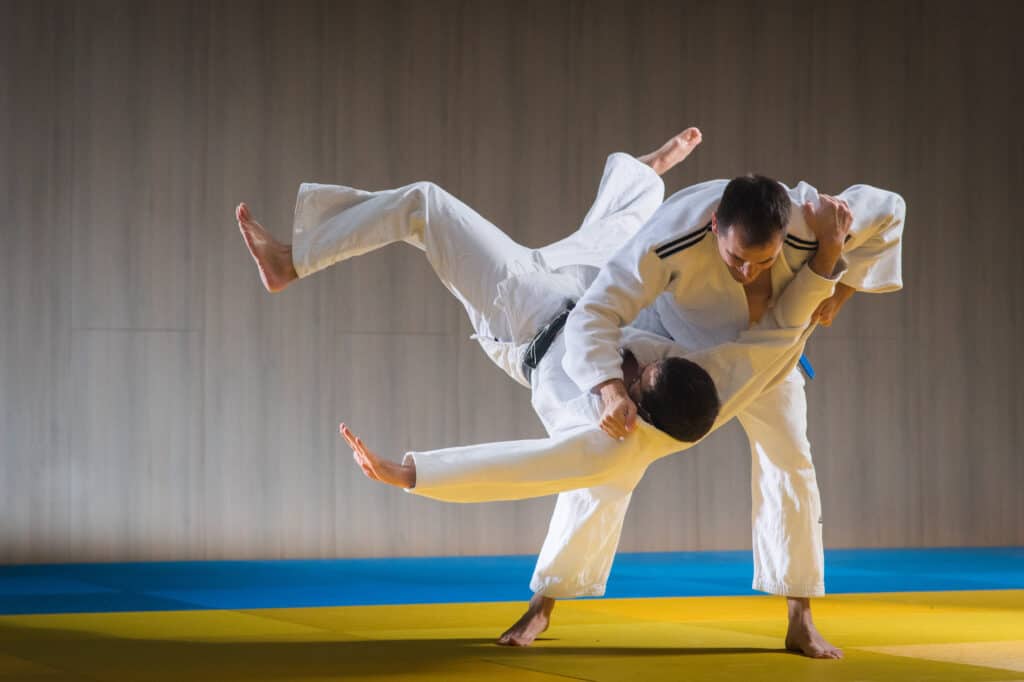
If you’re just starting as a novice in judo, you might be wondering if you truly need to find a dojo or a private instructor. After all, those can be expensive, and you might not be sure if they’re worth the investment. The truth is that a knowledgeable judo instructor is crucial to learning effective judo.
You cannot learn judo well without an instructor. Or maybe I should say that you should not learn judo without an instructor. While you can learn judo at home with videos, it’s not the same as learning from a qualified coach.
To master judo, you will want to find a proper judo instructor. If you don’t get outside coaching, you have a high chance of developing a poor technique that’s hard to shake. It is also important to learn the safety practices of judo with a qualified instructor.
A good judo instructor might seem unnecessary in the age of the Internet, as you can find many videos online that claim to be able to teach even the complete beginner judo without the need for an instructor at all.
You can even find lists of judo moves with instructions on how to perform them through free content or paid instructionals. While these resources can be helpful, relying solely on online guidance would be a big mistake.
Coaches serve many important functions in learning any new sport, but in martial arts, it’s particularly important to find a teacher early on.
Is Judo Good For Self-Defense?
Judo is effective for self-defense when properly applied. If self-defense is your goal then you should choose a judo academy that has a focus on self-defense. Some judo schools only focus on sport judo which is designed primarily for sport.
This is why you must find the right dojo and Sensei. That is a judo academy dojo that has a focus on self-defense and randori. Randori is simply another word for sparring.
Sparring is essential for actually developing the skills needed for self-defense. Just like developing any skill you need to practice. Many martial arts that promote self-defense never actually drill the techniques.
Judo began as a martial art focused on self-defense. However, since it became a sport many if not most academies have switched their major focus to Olympic-style judo.
There are, however, some schools that teach both judo for sport and self-defense. This is important because there are many things that you would want to do differently if you were in a self-defense situation.
For example, when executing a judo throw, you might not want to roll down to the ground with your opponent. Instead, you might simply want to throw them to the ground and run away.
Are There Chokes ( shimewaza ) In Judo?
If you are new to judo, chances are you are trying to familiarize yourself with the rules, and one of the biggest questions you have may be: can you choke in judo?
You can choke in Judo and there are three main types of chokes used in judo competition. These are the compression of the windpipe, the compression of the carotid arteries, and the compression of the lungs and chest. All three choking techniques are still legal today, except in junior competitions.
In Judo, choking is a type of grappling technique that is seen in three different methods. Each of these involves compression, but is seen on different parts of the body. Let’s take a closer look at what gets compressed during these grappling techniques:
- Windpipe. When you apply pressure to the windpipe, you stop or reduce the flow of air to the lungs.
- Carotid arteries. The carotid arteries are found on the right and left sides of the neck, under the ears and jawline. When compressed, blood and oxygen cannot flow properly to the brain, leading to unconsciousness.
- Lungs and chest. This technique is when you simply compress the lungs and the chest, which stops the opponent from breathing.
In Judo, these are known as “shime waza,” meaning ‘constriction’ and ‘technique’ respectively.
Is A Judo Grappling Dummy Worth Buying?
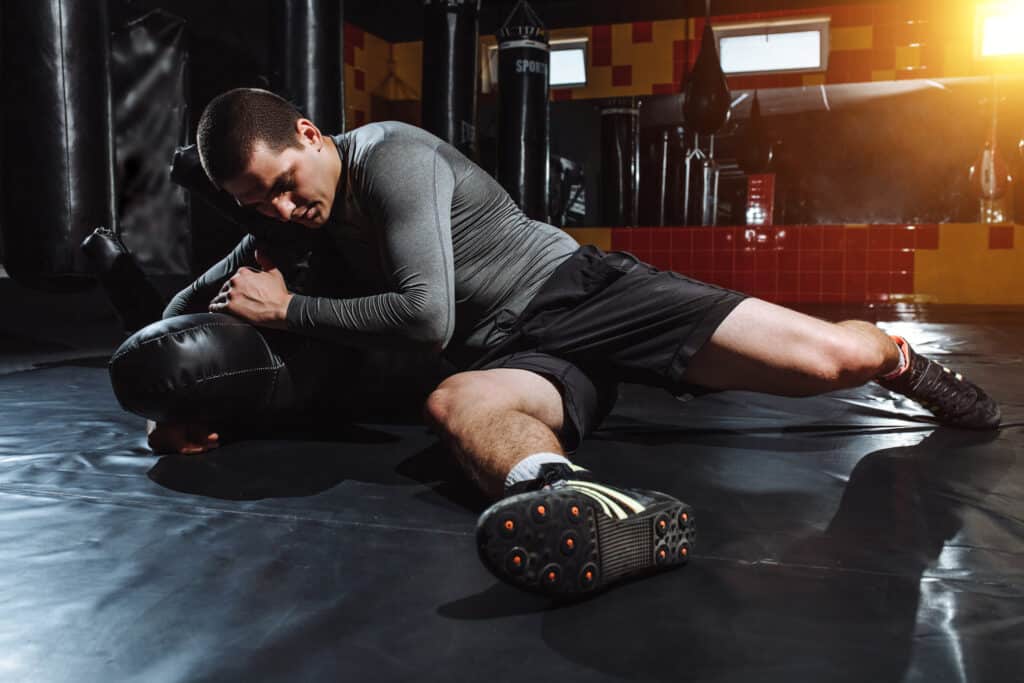
Many judokas think dummies are a waste of time and money. They are expensive; they don’t move, resist or react like a sparring partner; they wind up in your closet after a few sessions. Indeed, judo dummies aren’t cheap, and they do take up space in your living area, but is a judo dummy worth buying?
Judo throwing dummies can be worth buying because extra repetitions and practice will help you master the moves you’re learning. Throwing dummies can be especially valuable if you use YouTube or video classes to pick up new techniques. Maximize investment by practicing with your throwing dummy regularly.
Pros of Judo Dummies
- Practicing moves with a dummy helps you develop muscle memory.
- You can practice hard throws on a throwing dummy.
- A throwing dummy is ready whenever you feel like a workout.
Cons of Judo Dummies
- Practicing with a dummy is not as much fun as working with a partner.
- Dummies don’t offer the same resistance as a human partner.
- To work out with your dummy, you need a clear and uncluttered space.
Does Size and Strength Matter in Judo?
If you’re not blessed with a naturally large build, you might be worried that you’ll have a disadvantage in judo. At the same time, you might hope that if you become a judo black belt, you can beat any person of any size. Unfortunately, that’s not true; after all, there are different weight classes in judo for a reason.
Size and strength matter very much in judo. Even though skills and technique matter perhaps more, in a match of two different-sized people that are evenly matched in skill, the bigger person will likely win. But don’t let that discourage you from perfecting your judo technique!
As with all other types of martial arts like BJJ, you don’t need to be the biggest or the strongest to reap the benefits of judo. No matter how big you are, you will be able to get good at judo and use it to your advantage.
Will Judo Get You Ripped?

One of the first things many people notice when they get into judo is that many judokas are in very good shape. This is entirely understandable as judo is a very physically demanding sport that requires explosive strength. In addition, since judo has weight classes most judokas are very lean and muscular. This makes many people wonder: Will judo get you ripped?
The simple answer is that judo can be a good tool to help you get ripped. However, you will likely also need to follow a good strength training and diet regime as well. Practicing judo alone is likely not enough to get you ripped like many Olympic judokas.
That said, before we get into too much detail, I think it would be appropriate to define what exactly we mean by being ripped. Being ripped would imply that you not only have a sufficient amount of muscle but that you are also lean enough for your muscles to show.
That means for you to truly be ripped you will need to build a good amount of muscle while keeping your body fat at very low levels. Unless you are a heavyweight judo athlete with no weight limit, then being ripped can give you an advantage over your opponents in judo. This is because being ripped will likely give a strength advantage over someone in your weight class that is carrying around extra body fat.
If you are 180lbs of pure muscle and your opponent is 180 pounds with 20 extra pounds of fat they can lose, then you will likely be much stronger and more athletic. So if you want to be a judo player it is probably a good idea to be lean and muscular.
Will Judo Help You Achieve Your Fitness Goals?
As previously stated, the reason why so many judokas get so ripped is that it can give you a strength advantage over your opponent. If you are hoping to use judo to help you get fit there are a few things you should understand first.
The first thing I want to say is that judo is a great exercise and is a great way to help you stay in shape. So if you are simply looking for a hobby to help you stay fit then I would highly suggest trying out judo.
However, you should also understand that some of the judokas you see competing at the highest level are very serious athletes. They are rarely if ever achieving that level of fitness by practicing judo alone. They are also incorporating strength training, cardio, and strict dieting to help them become better athletes.
Though judo is a good exercise, the main focus when practicing judo is working on skill and technique. Many of the very fit judokas achieve their bodies outside of the dojo as much or more than they do inside the dojo. So unless you actually care about getting good at judo, then you are probably better off just hitting the gym to achieve your fitness goals.
I am not telling you this to try and talk you out of doing judo to help you achieve your fitness goals. Instead, I am trying to tell you that unless you are actually interested in learning judo for other reasons than fitness, then there are probably easier routes to take. You can simply lift weights and go on a calorie-restricted diet instead.
That said, if you are interested in learning judo for other reasons then it can be an excellent and fun way to burn some extra calories and maybe even build some muscle.
Will Judo Help You Build Muscle?
High-level judokas are some of the most muscular athletes in the world. This makes sense seeing as how the sport requires you to send people flying into the air. But will practicing judo alone help you to achieve more muscle mass?
Well, I think the answer really depends on the person asking the question. That being said, most judokas with a very large amount of muscle likely built this muscle in the gym by following a strength training program. In addition to this, they would follow a diet that is sufficient in protein and calories to supply the needs for muscle growth.
Of course, practicing judo alone can also give your muscles a fair amount of work as well. But is judo alone enough to build muscle? Whether or not judo alone will build muscle very much depends on whether or not you have already built a fair amount of muscle from other forms of exercise.
If you are going from the couch to the dojo then there is a good chance that judo might help you add a fair bit of muscle. On the other hand, if you are regularly going to the gym and lifting weights then practicing judo will likely do very little for helping you to build more muscle.
In fact, if you begin lifting weights less often to make more time for a martial art like judo then you might actually lose a bit of muscle. That said, it really depends on where you are starting from. Either way, judo alone will only build muscle up to a certain point. After that, you will need to incorporate more strength training to continue to build muscle.
What should understand is that if you want to become a high-level judo competitor then you will need to be spending plenty of time in both the dojo and the weight room. Think of exercise as a way to make you a better athlete for judo instead of hoping judo will help you become a better athlete.
Of course, if you are not exercising at all then judo is undoubtedly a great way to help you burn some extra calories and maybe even put on some muscle. If so, getting started in some form of exercise like judo is a good idea.
Will Judo Help You Lose Fat?
The simple answer is yes, practicing judo can help you burn some extra calories and lose some fat. After all, losing weight is all about burning more calories than you consume. That said, exercise alone is often not enough for someone to achieve low body fat levels.
In addition to judo and other forms of exercise, you will need to also follow a strict diet that is high in protein but contains fewer calories than you will burn in a day. A good rule of thumb is to consume at least one gram of protein per pound of goal body weight. So if you are 200 lbs and would like to get down to 180 then I would suggest getting about 180 grams of protein per day at the very least.
Figuring out the number of calories that you need to consume is a bit more complicated. Depending on your metabolic rate, leanness, and activity levels, most people’s maintenance calories are somewhere between 13-16 times their body weight in pounds.
Mataintenece calories are simply the number of calories it takes to maintain your current body weight. So a 200lb person’s maintenance calories are likely somewhere between 2600-3200 calories per day. If you are lean and active your maintenance is likely at the higher end.
Judo is a good way to burn extra calories. But if you do not control the calories you consume then you might not lose fat from practicing judo.
Does Height Matter in Judo? Pros and Cons Of Being Tall In Judo
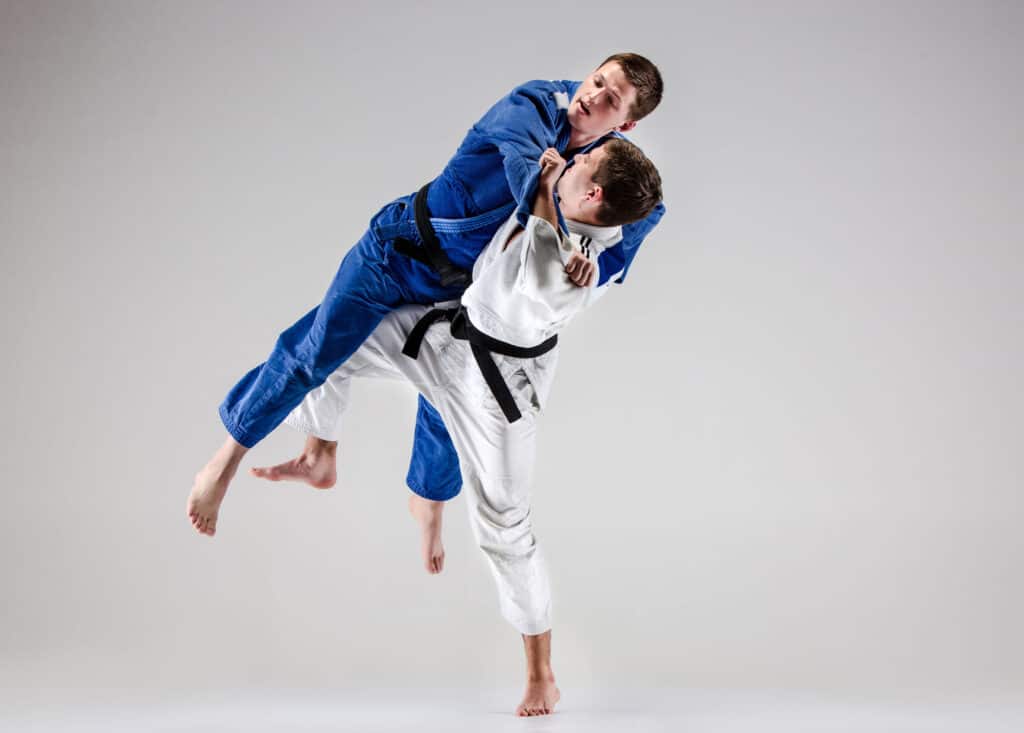
Judo is a highly technical sport that requires perfect positioning, execution, timing, and leverage to perform dazzling throws and trips against an unwilling opponent. Because of the need to manipulate gravity and balance to defeat your opponent, body types and proportions play a significant role in how a player will perform in Judo. Does height matter in Judo?
Height does matter in Judo, as shorter Judokas have an advantage because their center of gravity is much lower, making their stability better. However, by widening their stance and lowering their center, tall Judo players can negate this disadvantage. There are many tall world-class Judokas.
Lets quickly cover:
- The pros and cons of being a tall Judo competitor
- Strategies to help Judokas overcome their disadvantages
- The most effective tips, principles, and techniques for tall players to become successful in Judo
How Height Affects A Judokas Game
Whether a Judoka is short or tall makes a difference in how they perform because they can use their own body as a lever to gain the ideal position for throwing their opponents. Their center of gravity will either be a strength or a weakness and how long their limbs are will determine their reach limits.
Let’s look at these differences in detail.
Center of Gravity
Shorter Judokas have an advantage over their taller counterparts, by default, because their center of gravity is lower to the ground. Having a low center of gravity provides a body of mass with more stability.
For example, think of two stacks of books where one is 10 books high and the other is 100 books high. The stack of 100 books is much more likely to topple over because its center of gravity is higher from the ground.
Limb Length and Leverages
While shorter Judo players have a more stable base and thus hold the advantage, there is another factor that gives them a disadvantage over taller Judokas. Long arms and legs offer many advantages that, when used properly, can negate and even surpass any height disadvantage that a Judo player may possess.
The Pros and Cons Of Height In Judo
While being a short and stocky Judo practitioner may grant an athlete a balance advantage, there are also advantages to being tall in Judo competitions.
Among the top-ranking Judokas, you will find many examples of both tall and lanky, as well as short and compact athletes, showing that success is more about maximizing what you have than relying on a genetic predisposition.
The Pros of Being Tall in Judo
Tall Judo competitors can grab hold of their opponent Gi first and gain control of the clinch a lot faster. Having long arms allows tall Judokas to control the distance and range better, which means they have more ability to dictate when and how the clinches occur.
Tall Judo players can also set trips from further out, which can be very difficult for your opponent to prevent, even if they can anticipate it. They can wrap and control their opponents in several unorthodox ways while in the clinch, making them unpredictable and very difficult to counter-throw.
The Cons of Being Tall in Judo
The main drawback to being the taller competitor in a Judo contest is that, as we already briefly discussed, the margin of error you are permitted is very small. Taller Judokas have the burden of modifying their style to work against their opponent and not the other way around.
It is much easier for a shorter player to “get under” a tall one, which means they can drop lower to gain an advantage when throwing. Both are trying to get lower than the other by dropping their center and making themselves a more stable target.
How Often Should You Train Judo?

When people decide to take up a new form of exercise or learn a skill, in this case, martial arts, one of the first questions they ask is how often they need to train. People who are interested in learning judo often wonder if they will be able to train often enough for it to be effective. But how often should you train judo to truly learn the art?
You should train judo two to three times a week to help develop muscle memory. However, your ideal training time varies based on your goals, fitness level, and other life circumstances. Those simply looking for exercise can train twice a week, but those looking to compete at the top level might practice daily.
The Ideal Judo Training Frequency
For any Judoka with a recreational, fitness, or self-defense purpose for training, the primary goals are muscle memory and the continued acquisition of new Judo skills.
The saying “practice makes perfect” is never more true than with sports and self-defense methods. To that end, let’s look at the time commitment generally needed to achieve primary goals.
Beginners Should Train Twice Per Week
As with any new fitness endeavor, it’s best to take things slowly at first. There is a much higher chance of injury when you’re still learning – be it from overdoing it or poor form.
Here’s the thing: Judo is particularly hard on the body. Not only do you exert yourself from a cardio standpoint, but you’ll also fall into mats and get thrown over your opponent’s shoulders.
Chances are, you’ll be pretty sore your first few weeks and months of training, so you must be careful not to train too hard. If you’re sore all the time, it will be too easy to give up. With that in mind, training once a week will let you see if the sport is for you before committing too many hours and too much money.
However, only training once a week will lead to slow progress.
I would advise starting with once a week for a few weeks, so you can see if it’s for you. After your body has gotten used to being thrown around, you should go twice a week. This frequency will let you learn skills at a faster pace.
At the same time, your body will get used to this new form of exercise, and your muscle memory will start to kick in.
Top Judo Competitors Often Train Daily
Once you decide to compete, your training requirements will likely increase. This is true both in terms of time practicing Judo and with the addition of cross-training.
For example, many top Judo players will work on strength training, which uses muscle groups often neglected in Judo. These exercises help build strength and stamina and also allow an athlete to resist injury.
Top Judoka who want to go to the Olympics or other major competitions will spend all day at it. For instance, Danny Williams, a member of past British Olympic teams, indicates that you’ll train several times a day at this level.
Of course, this does not mean you will be training at 100 percent intensity every day. But you will be doing some sort of judo training 5-7 days per week and often multiple sessions per day.
For most people, though, this level of involvement isn’t necessary. If you ask the average Judoka, they’ll tell you that non-professionals shouldn’t do much more than three sessions a week.
